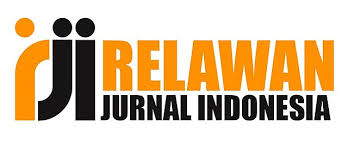Language Harmony: Analysis of the Influence of Arabic Children's Songs in the Formation of Early Childhood Language
DOI:
https://doi.org/10.58223/al-irfan.v7i2.276Keywords:
Language formation, early childhood, Arabic children's songsAbstract
The process of language acquisition in children is not always immediate. There are various ways through which language can be learned, such as through familial interactions or exposure to music. Research indicates that music, including children's songs, plays a role in enhancing cognitive and language development in young children. This study investigates how Arabic children's songs can positively impact early language skills. Specifically, it aims to examine the influence of Arabic children's songs on language development during early childhood. The research was conducted using qualitative research methods with a descriptive approach. The type of research used is descriptive qualitative research. Data were collected from primary and secondary sources through observation and interviews. The analysis technique used the Miles and Huberman model which consists of 4 stages, namely: (1) data collection, (2) data reduction, (3) data presentation, and (4) decision making or verification. The findings suggest that Arabic children's songs significantly contribute to early language development. The rich vocabulary present in these songs serves as a beneficial stimulus for children, aiding in their language acquisition process. Moreover, Arabic children's songs have the potential to boost children's motivation to learn and accelerate their language skills in an enjoyable and interactive manner.
References
Al-Afar, M. A. (2016). The Impact of Using Songs and Music on English Language Acquisition of Children in Saudi Arabia. المجلة العربية للعلوم و نشر الأبحاث, 2(1), 451–463. https://doi.org/10.12816/0025343
Antonius, P. (2018). Memahami Aspek Mental Dan Neorologis Berbahasa. PT Gramedia Pustaka Utama.
Ariami, F., Mulyana, S., & Asem. (2009). Pelajaran Mendengarkan. Pusat Pengembangan dan Pemberdayaan Pendidikan dan Tenaga Kependidikan Bahasa.
Chaer, A. (2009). Psikolinguistik : Kajian Teori. PT Rineka Cipta.
Darwowodjoyo, S. (2016). Psikolinguistik. Yayasan Pustaka Obor Indonesia.
Harimurti, K. (2008). Kamus linguistik.
Ingram, D. (2013). Phonological Patterns In The Speech Of Young Childreb. Cambridge University Press.
Kase, A. D., Sukiatni, D. S., & Kusumandari, R. (2023). Resiliensi remaja korban kekerasan seksual di Kabupaten Timur Tengah Selatan: analisi model Miles dan Huberman. Journal of Psychological Reaserch, 3(2), 301–311.
Kristianty, Theresia, & Christiaan, K. (2006). Pandangan-Pandangan Teoritis Kaum Behaviorisme Tentang pemerolehan Bahasa Pertama. Jurnal Pendidikan Penbur, 5(6), 1–40.
Mailani, O., Nuraeni, I., Syakila, S. A., & Lazuardi, J. (2022). Bahasa Sebagai Alat Komunikasi Dalam Kehidupan Manusia. Kampret Journal, 1(1), 1–10. https://doi.org/10.35335/kampret.v1i1.8
Maria, F., Mariana, L., Marlyn, L., Margaritha, L., & Eightmarc, N. (2021). Pengaruh Video Lagu Anak – Anak Terhadap Pemerolehan Bahasa Anak Usia Dini ( Kajian Psikolinguistik ) Early Child Language Acquisition and The Impact of Children ’ s Songs Video ( Psycolinguistics Studies ). Jurnal Montessori: Jurnal Pendidikan Kristen Anak Usia Dini, 2(1), 36–45.
Munawwarah, H., & Hibana, H. (2022). Implementasi Pengenalan Kosakata Bahasa Arab pada Anak Usia 5-6 Tahun. Jurnal Obsesi : Jurnal Pendidikan Anak Usia Dini, 6(6), 5454–5462. https://doi.org/10.31004/obsesi.v6i6.2989
Nuryani, & Aji K.P., D. (2013). Psikolunguistik. Mazhab.
Ramli, S. A. (2020). UPAYA MENINGKATKAN KEMAMPUAN BERBAHASA ANAK. 01(01), 41–49.
Rifdah, S. N., & Oktavianingrum, D. (2022). PENGARUH LAGU DEWASA “ HATI YANG KAU SAKITI ” TERHADAP PEMEROLEHAN BAHASA ANAK USIA 3 TAHUN. 14(1), 1–11.
Setiawan, D., Hardiyani, I. K., Aulia, A., & Hidayat, A. (2022). Memaknai Kecerdasan melalui Aktivitas Seni: Analisis Kualitatif Pengembangan Kreativitas pada Anak Usia Dini. Jurnal Obsesi : Jurnal Pendidikan Anak Usia Dini, 6(5), 4507–4518. https://doi.org/10.31004/obsesi.v6i5.2521
Wulandari, D. I. (2018). PEMEROLEHAN BAHASA INDONESIA ANAK USIA 3-5 TAHUN DI PAUD LESTARI DESA BLIMBING KECAMATAN PACIRAN. 6(1), 74–83.
Yetti, E., Syafnita, T., & Siti Syarah, E. (2019). The Effect of Motion and Song on Children`s Speaking Ability. 178(ICoIE 2018), 429–433. https://doi.org/10.2991/icoie-18.2019.92
Downloads
Published
How to Cite
Issue
Section
License
Copyright (c) 2024 Amrina Rosyada, Iqbal Ahsanul Aula

This work is licensed under a Creative Commons Attribution 4.0 International License.
Lisensi :
Al-Irfan: Journal of Arabic Literature and Islamic Studies is published under conditions Creative Commons Attribution 4.0 International License / CC BY 4.0 This license permits anyone to copy and redistribute this material in any form or format, modify, modify, and make derivative works of this material for any purpose, including commercial purposes, so long as they credit the author for the original work.











